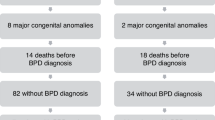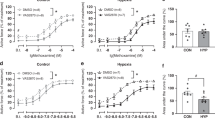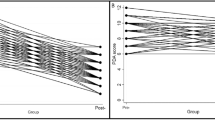Abstract
Background:
Increased oxygen tension at birth regulates physiologic events that are essential to postnatal survival, but the accompanying oxidative stress may also generate isoprostanes. We hypothesized that isoprostanes regulate ductus arteriosus (DA) function during postnatal vascular transition.
Methods:
Isoprostanes were measured by gas chromatography–mass spectrometry. DA tone was assessed by pressure myography. Gene expression was measured by quantitative PCR.
Results:
Oxygen exposure was associated with increased 8-iso-prostaglandin (PG)F2α in newborn mouse lungs. Both 8-iso-PGE2 and 8-iso-PGF2α induced concentration-dependent constriction of the isolated term DA, which was reversed by the thromboxane A2 (TxA2) receptor antagonist SQ29548. SQ29548 pretreatment unmasked an isoprostane-induced DA dilation mediated by the EP4 PG receptor. Exposure of the preterm DA to 8-iso-PGE2 caused unexpected DA relaxation that was reversed by EP4 antagonism. In contrast, exposure to 8-iso-PGF2α caused preterm DA constriction via TxA2 receptor activation. Further investigation revealed the predominance of the TxA2 receptor at term, whereas the EP4 receptor was expressed and functionally active from mid-gestation onward.
Conclusion:
This study identifies a novel physiological role for isoprostanes during postnatal vascular transition and provide evidence that oxidative stress may act on membrane lipids to produce vasoactive mediators that stimulate physiological DA closure at birth or induce pathological patency of the preterm DA.
Similar content being viewed by others
Log in or create a free account to read this content
Gain free access to this article, as well as selected content from this journal and more on nature.com
or
References
Hoffman JI, Kaplan S . The incidence of congenital heart disease. J Am Coll Cardiol 2002;39:1890–900.
Franco MC, Kawamoto EM, Gorjão R, et al. Biomarkers of oxidative stress and antioxidant status in children born small for gestational age: evidence of lipid peroxidation. Pediatr Res 2007;62:204–8.
Signorini C, Ciccoli L, Leoncini S, et al. Free iron, total F-isoprostanes and total F-neuroprostanes in a model of neonatal hypoxic-ischemic encephalopathy: neuroprotective effect of melatonin. J Pineal Res 2009;46:148–54.
Peter Stein T, Scholl TO, Schluter MD, et al. Oxidative stress early in pregnancy and pregnancy outcome. Free Radic Res 2008;42:841–8.
Buonocore G, Perrone S, Longini M, et al. Oxidative stress in preterm neonates at birth and on the seventh day of life. Pediatr Res 2002;52:46–9.
Milne GL, Yin H, Brooks JD, Sanchez S, Roberts LJ, Morrow JD . Quantification of F2-isoprostanes in biological fluids and tissues as a measure of oxidant stress. Meth Enzymol 2007;433:113–26.
Comporti M, Signorini C, Leoncini S, Buonocore G, Rossi V, Ciccoli L . Plasma F2-isoprostanes are elevated in newborns and inversely correlated to gestational age. Free Radic Biol Med 2004;37:724–32.
Rogers MS, Wang CC, Lau TK, et al. Relationship between isoprostane concentrations, metabolic acidosis, and morbid neonatal outcome. Clin Chem 2005;51:1271–4.
Weinberger B, Nisar S, Anwar M, Ostfeld B, Hegyi T . Lipid peroxidation in cord blood and neonatal outcome. Pediatr Int 2006;48:479–83.
Cracowski JL, Durand T . Cardiovascular pharmacology and physiology of the isoprostanes. Fundam Clin Pharmacol 2006;20:417–27.
Janssen LJ . Isoprostanes: an overview and putative roles in pulmonary pathophysiology. Am J Physiol Lung Cell Mol Physiol 2001;280:L1067–82.
Belik J, González-Luis GE, Perez-Vizcaino F, Villamor E . Isoprostanes in fetal and neonatal health and disease. Free Radic Biol Med 2010;48:177–88.
van der Sterren S, Villamor E . Contractile effects of 15-E2t-isoprostane and 15-F2t-isoprostane on chicken embryo ductus arteriosus. Comp Biochem Physiol, Part A Mol Integr Physiol 2011;159:436–44.
Belik J, Jankov RP, Pan J, Yi M, Chaudhry I, Tanswell AK . Chronic O2 exposure in the newborn rat results in decreased pulmonary arterial nitric oxide release and altered smooth muscle response to isoprostane. J Appl Physiol 2004;96:725–30.
Jankov RP, Luo X, Cabacungan J, et al. Endothelin-1 and O2-mediated pulmonary hypertension in neonatal rats: a role for products of lipid peroxidation. Pediatr Res 2000;48:289–98.
Luo X, Sedlackova L, Belcastro R, Cabacungan J, Lye SJ, Tanswell AK . Effect of the 21-aminosteroid U74389G on oxygen-induced free radical production, lipid peroxidation, and inhibition of lung growth in neonatal rats. Pediatr Res 1999;46:215–23.
Clarke DL, Belvisi MG, Hardaker E, Newton R, Giembycz MA . E-ring 8-isoprostanes are agonists at EP2- and EP4-prostanoid receptors on human airway smooth muscle cells and regulate the release of colony-stimulating factors by activating cAMP-dependent protein kinase. Mol Pharmacol 2005;67:383–93.
Janssen LJ, Tazzeo T . Involvement of TP and EP3 receptors in vasoconstrictor responses to isoprostanes in pulmonary vasculature. J Pharmacol Exp Ther 2002;301:1060–6.
Crankshaw DJ, Rangachari PK . Isoprostanes: more than just mere markers. Mol Cell Biochem 2003;253:125–30.
Minuz P, Andrioli G, Degan M, et al. The F2-isoprostane 8-epiprostaglandin F2alpha increases platelet adhesion and reduces the antiadhesive and antiaggregatory effects of NO. Arterioscler Thromb Vasc Biol 1998;18:1248–56.
Fontana L, Giagulli C, Minuz P, Lechi A, Laudanna C . 8-Iso-PGF2 alpha induces beta 2-integrin-mediated rapid adhesion of human polymorphonuclear neutrophils: a link between oxidative stress and ischemia/reperfusion injury. Arterioscler Thromb Vasc Biol 2001;21:55–60.
Waleh N, Seidner S, McCurnin D, et al. Anatomic closure of the premature patent ductus arteriosus: The role of CD14+/CD163+ mononuclear cells and VEGF in neointimal mound formation. Pediatr Res 2011;70:332–8.
Echtler K, Stark K, Lorenz M, et al. Platelets contribute to postnatal occlusion of the ductus arteriosus. Nat Med 2010;16:75–82.
Rogers MS, Mongelli JM, Tsang KH, Wang CC, Law KP . Lipid peroxidation in cord blood at birth: the effect of labour. Br J Obstet Gynaecol 1998;105:739–44.
Friel JK, Friesen RW, Harding SV, Roberts LJ . Evidence of oxidative stress in full-term healthy infants. Pediatr Res 2004;56:878–82.
Signorini C, Perrone S, Sgherri C, et al. Plasma esterified F2-isoprostanes and oxidative stress in newborns: role of nonprotein-bound iron. Pediatr Res 2008;63:287–91.
Ahola T, Fellman V, Kjellmer I, Raivio KO, Lapatto R . Plasma 8-isoprostane is increased in preterm infants who develop bronchopulmonary dysplasia or periventricular leukomalacia. Pediatr Res 2004;56:88–93.
Longini M, Perrone S, Vezzosi P, et al. Isoprostane levels in urine of preterm newborns treated with ibuprofen for patent ductus arteriosus closure. Pediatr Nephrol 2011;26:105–9.
Reeve HL, Tolarova S, Nelson DP, Archer S, Weir EK . Redox control of oxygen sensing in the rabbit ductus arteriosus. J Physiol (Lond) 2001;533(Pt 1):253–61.
Michelakis ED, Rebeyka I, Wu X, et al. O2 sensing in the human ductus arteriosus: regulation of voltage-gated K+ channels in smooth muscle cells by a mitochondrial redox sensor. Circ Res 2002;91:478–86.
Thébaud B, Michelakis ED, Wu XC, et al. Oxygen-sensitive Kv channel gene transfer confers oxygen responsiveness to preterm rabbit and remodeled human ductus arteriosus: implications for infants with patent ductus arteriosus. Circulation 2004;110:1372–9.
Kajimoto H, Hashimoto K, Bonnet SN, et al. Oxygen activates the Rho/Rho-kinase pathway and induces RhoB and ROCK-1 expression in human and rabbit ductus arteriosus by increasing mitochondria-derived reactive oxygen species: a newly recognized mechanism for sustaining ductal constriction. Circulation 2007;115:1777–88.
Sametz W, Hennerbichler S, Glaser S, Wintersteiger R, Juan H . Characterization of prostanoid receptors mediating actions of the isoprostanes, 8-iso-PGE(2) and 8-iso-PGF(2alpha), in some isolated smooth muscle preparations. Br J Pharmacol 2000;130:1903–10.
McNamara P, Lawson JA, Rokach J, FitzGerald GA . Isoprostane activation of the nuclear hormone receptor PPAR. Adv Exp Med Biol 2002;507:351–5.
Reese J, Paria BC, Brown N, Zhao X, Morrow JD, Dey SK . Coordinated regulation of fetal and maternal prostaglandins directs successful birth and postnatal adaptation in the mouse. Proc Natl Acad Sci USA 2000;97:9759–64.
Loftin CD, Trivedi DB, Tiano HF, et al. Failure of ductus arteriosus closure and remodeling in neonatal mice deficient in cyclooxygenase-1 and cyclooxygenase-2. Proc Natl Acad Sci USA 2001;98:1059–64.
Nguyen M, Camenisch T, Snouwaert JN, et al. The prostaglandin receptor EP4 triggers remodelling of the cardiovascular system at birth. Nature 1997;390:78–81.
Reese J, Anderson JD, Brown N, Roman C, Clyman RI . Inhibition of cyclooxygenase isoforms in late- but not midgestation decreases contractility of the ductus arteriosus and prevents postnatal closure in mice. Am J Physiol Regul Integr Comp Physiol 2006;291:R1717–23.
Reese J, O’Mara PW, Poole SD, et al. Regulation of the fetal mouse ductus arteriosus is dependent on interaction of nitric oxide and COX enzymes in the ductal wall. Prostaglandins Other Lipid Mediat 2009;88:89–96.
Leonhardt A, Glaser A, Wegmann M, Schranz D, Seyberth H, Nüsing R . Expression of prostanoid receptors in human ductus arteriosus. Br J Pharmacol 2003;138:655–9.
Rheinlaender C, Weber SC, Sarioglu N, Strauss E, Obladen M, Koehne P . Changing expression of cyclooxygenases and prostaglandin receptor EP4 during development of the human ductus arteriosus. Pediatr Res 2006;60:270–5.
Trivedi DB, Sugimoto Y, Loftin CD . Attenuated cyclooxygenase-2 expression contributes to patent ductus arteriosus in preterm mice. Pediatr Res 2006;60:669–74.
Jourdan KB, Evans TW, Curzen NP, Mitchell JA . Evidence for a dilator function of 8-iso prostaglandin F2 alpha in rat pulmonary artery. Br J Pharmacol 1997;120:1280–5.
Richard C, Gao J, LaFleur B, et al. Patency of the preterm fetal ductus arteriosus is regulated by endothelial nitric oxide synthase and is independent of vasa vasorum in the mouse. Am J Physiol Regul Integr Comp Physiol 2004;287:R652–60.
Dröge W . Free radicals in the physiological control of cell function. Physiol Rev 2002;82:47–95.
Acknowledgements
We gratefully acknowledge the critical support and participation of Dr Jason D. Morrow (deceased) in these studies.
Author information
Authors and Affiliations
Corresponding author
Rights and permissions
About this article
Cite this article
Chen, JX., O'Mara, P., Poole, S. et al. Isoprostanes as physiological mediators of transition to newborn life: novel mechanisms regulating patency of the term and preterm ductus arteriosus. Pediatr Res 72, 122–128 (2012). https://doi.org/10.1038/pr.2012.58
Received:
Accepted:
Published:
Issue date:
DOI: https://doi.org/10.1038/pr.2012.58
This article is cited by
-
Intravenous paracetamol in comparison with ibuprofen for the treatment of patent ductus arteriosus in preterm infants: a randomized controlled trial
European Journal of Pediatrics (2021)
-
Role of dopamine and selective dopamine receptor agonists on mouse ductus arteriosus tone and responsiveness
Pediatric Research (2020)
-
Understanding the pathobiology in patent ductus arteriosus in prematurity—beyond prostaglandins and oxygen
Pediatric Research (2019)
-
Exploration of potential biochemical markers for persistence of patent ductus arteriosus in preterm infants at 22–27 weeks’ gestation
Pediatric Research (2019)
-
Predictors of successful closure of patent ductus arteriosus with indomethacin
Journal of Perinatology (2015)



